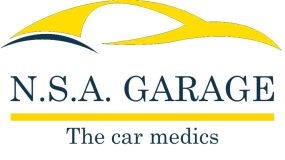
For those of us who own vehicles regardless of the size, I have a question for you. Have you ever had such an experience? Your car develops an issue, and you call your mechanic or take it to the garage. Good for you, your mechanic has an automotive diagnostic scan tool so he performs an auto diagnosis. The results of the scan indicate that the MAP sensor has a performance problem (just as an example). Your mechanic concludes that it requires to be replaced and informs you of the same. You trust your mechanic, so you give him the go-ahead. It is replaced, and luckily, it responds positively to the change so you happily drive away.
However, a few days or weeks later, the same issue recurs. For those of us who have had such an experience you agree with me that this becomes the start of unending trips to the garage. You end up losing a lot of time and money on the same issue. Some of us end up changing our mechanics since we suspect they may not be having the expertise needed to handle the issue conclusively.
The doctor’s analogy
Let me bring you closer home.
Imagine you have gone to see the doctor and by simply telling the doctor how you are feeling, he tells you that you have diabetes. Can that happen? Absolutely NO! A good doctor will conduct a number of scientific and methodological procedures in order to collect as much information as s/he could possibly get/need. Such a doctor will inquire from you on a number of issues including your medical history. S/he will take your body temperature, pulse rate, and blood pressure. If that is not enough, they will send you to the lab for further test.
You see, doctors have a kind of a checklist for every disease. For every item on the checklist and for a particular disease, they know that if a person is ailing from that disease then their values will be within a particular range. It is only when they check against this checklist and confirm that your values fall under those of a person ailing from the disease that they conclude you are sick.
We should approach auto diagnosis in a similar way. Take it from us that every part in your car especially the electronic components have a specific scientific approach that should be conducted on it to confirm if it is faulty or not.
Firing of the parts change Cannon
The problem is that the said automotive diagnostic tools have turned our mechanics into parts changers. Some take the results of the scan and based on that alone they fire the parts change cannon. What they fail to understand is the purpose of the scan tool. The diagnostic scan tools are referred to as OBDII standing for On-Board Diagnostics. Just like the name suggests, the vehicles continuously monitor their systems using sensors, solenoids, and other components.
When a particular component registers a value out of the normal range, the car computer records this in the form of a Diagnostic Trouble Code (DTC). If the trouble code is registered in more than two drive cycles, then the computers turn on the check engine light, the ABS light, the SRS light, etc. Now, when the mechanic scans your car (what they call auto diagnosis), they get these trouble codes. A sensor registering a value out of the normal range does not necessarily mean that the sensor itself is faulty. For this reason, it is wrong to make parts change calls based on only the results of the scan.
A Guarantee on Your Money

If you wish to receive this level of professional auto diagnosis in Kenya, get in touch with us at N Seal Diagnostics. We have taken our time to learn the background material, theories, and mechanisms of automotive systems and we have developed a scientific mindset that allows us to troubleshoot accurately. The scientific mindset allows us to identify the only thing that could be wrong with the car and we fix it. Further, we always verify the fix scientifically to prove that the fix is conclusive. We give a guarantee on any parts change call that we make in that if it doesn’t fix the car problem, we bear the cost of the part change
